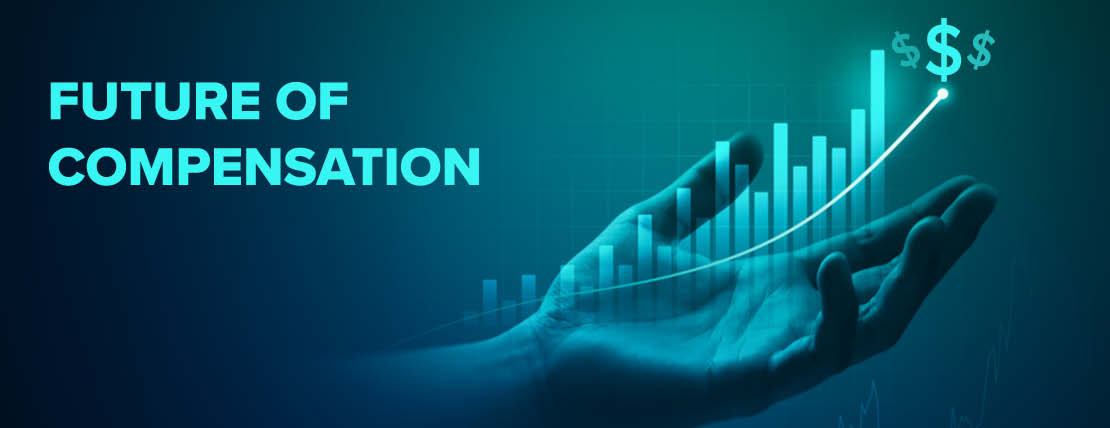For WorldatWork Members
- 2025 Priorities of Total Rewards Leaders, research
- How Total Rewards Can Solve Loyalty Issues Among Younger Workers, Workspan Daily Plus+ article
- Leveraging Incentives for Future Work Challenges: Exploring the Employee Perspective, Journal of Total Rewards article
- Develop Personalized and Inclusive Recognition Programs for Your Hybrid Workplace, Workspan Magazine article
For Everyone
- Utilizing Data to Personalize Total Rewards, Workspan Daily article
- Incorporate AI to Personalize Financial Well-Being Benefits, Workspan Daily article
- With a Multigenerational Workforce, Personalized Rewards Are Key, Workspan Daily article
- Employees Seek More Personalized Total Rewards Packages, Workspan Daily article
- Reimagining Total Rewards – A Personalized and Dynamic Experience, on-demand webinar
While personalization has become something of a buzzword in the total rewards sphere in recent years, the concept often is assigned to the benefits side — through wellness programs, flexible work options or voluntary benefits. But what about compensation?
Using a “modular” approach to hyper-personalize employees’ compensation experience can serve as a powerful motivator for workers by allowing them to structure their pay in a way that best fits their in-the-moment needs, according to a recent report from Deloitte.
Access a bonus Workspan Daily article on this subject:
While the concept of allowing some level of compensation personalization is not brand new, it’s still fairly uncommon, particularly at the hyper-personalized or modular level, said Julie Duda, a vice president of human capital insights at Deloitte Consulting LLP.
Although 55% of business leaders consider it important to use new technologies and strategies to motivate workers in a hyper-personalized way, only 17% said they have these types of efforts in place, and only 5% were leading in this area, Duda said — and when you’re looking at personalizing rewards, compensation offers a significant opportunity.
“It is only by understanding and tapping into motivations at an individual level — the unit of one — that we can truly drive performance,” Duda said.
What Does Modular Compensation Look Like?
Hyper-personalized compensation may vary from organization to organization, but these are a few examples of the modular dollars-and-cents options employees may have to choose from, according to the Deloitte report and the experts interviewed for this piece:
- A lower base salary and a higher bonus opportunity versus a higher base salary and less bonus potential
- Bonuses versus equity or stock options versus restricted stock units with different vesting schedules as performance rewards
- The option to extend longer-term incentives by a year or two in return for a larger reward based on continued success with targets or objectives
- Customized reimbursement
- Retirement account matching versus student loan repayment matching
- Longer-term employer contributions such as retirement versus shorter-term assistance such as emergency savings
“Personalized compensation lets you be really dynamic, and it has an incredible effect on retention,” said Marcy Klipfel, the chief engagement officer at Businessolver, a provider of benefits and HR technology solutions. “Different employees will place importance on different things in life. If you don’t put yourself in their mindset, then you may miss opportunities. This opens the door for other organizations to employ and retain them.”
Might This Approach Fit Your Organization?
It may not be the right time for your organization to approach modular compensation if you have not already implemented personalization in other areas of your total rewards offering, said Hannah Yardley, the chief people and culture officer at Achievers, an employee recognition and rewards platform provider.
“If you’re not doing personalized benefits, it could be really hard to set up personalized compensation,” Yardley said. “Total rewards personalization is a gateway; it would be a big leap to jump into personalized compensation as your first foray into this space.”
Another key step is ensuring you have a solid, deeply rooted holistic compensation philosophy for your organization, Klipfel said. That foundation needs to be strong before you make changes to your compensation structure.
To move this forward, make sure you’re not only communicating with workers every step of the way but also listening to them. That includes gathering input and data about whether hyper-personalized compensation fits the needs of your particular workforce at all … before you take steps to shake things up and architect a designer compensation framework, Yardley said.
“Communication should go both ways,” Duda noted. “When making any change as large as converting to a hyper-personalized and modular compensation system, listening to the workforce is just as important as telling them about it. Our research shows that high-performing organizations tend to have a more employee-centric approach. They gather input from workers and involve them in the co-creation of the new approach to ensure it meets their needs.”
Editor’s Note: Additional Content
For more information and resources related to this article, see the pages below, which offer quick access to all WorldatWork content on these topics:







